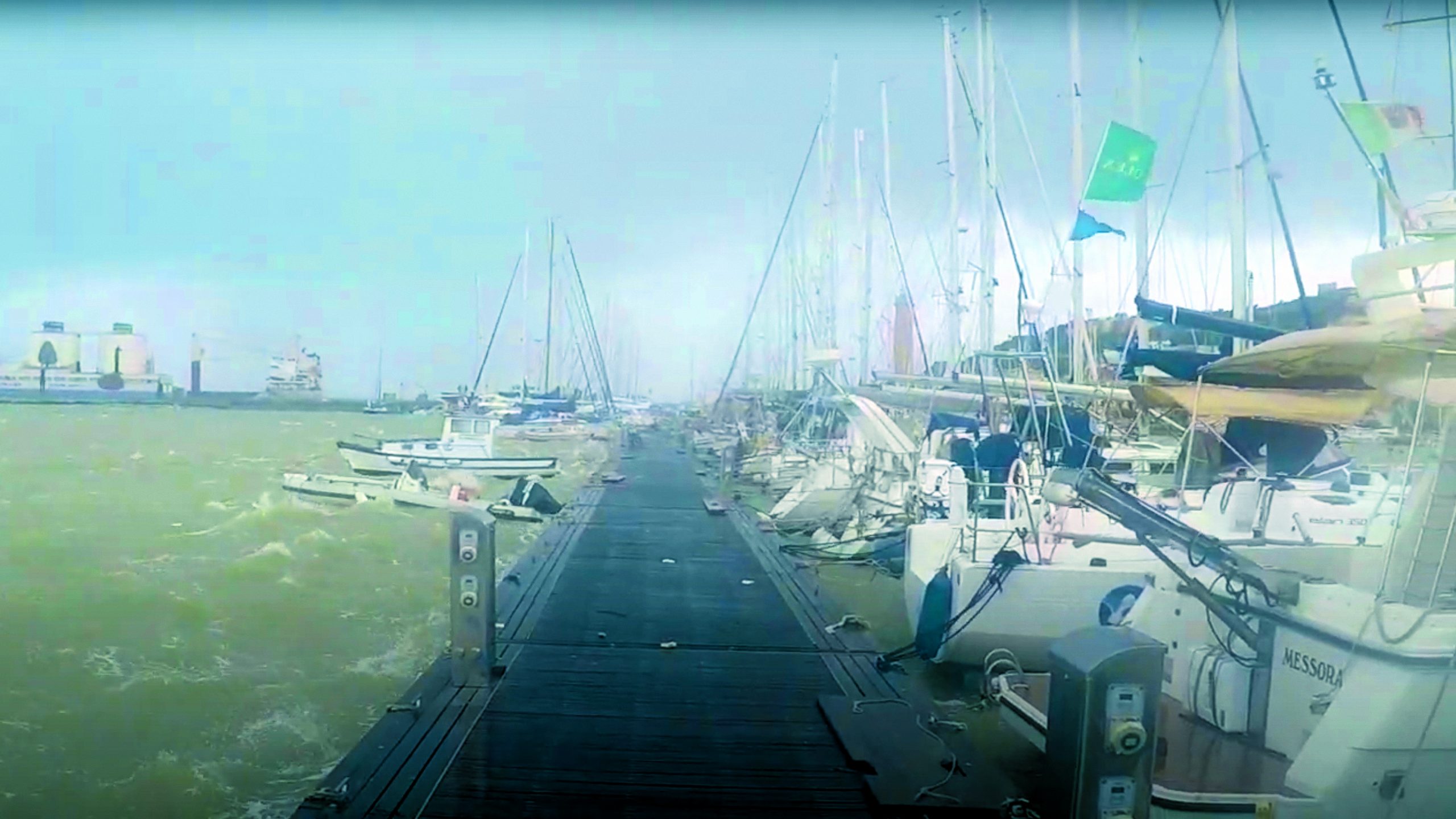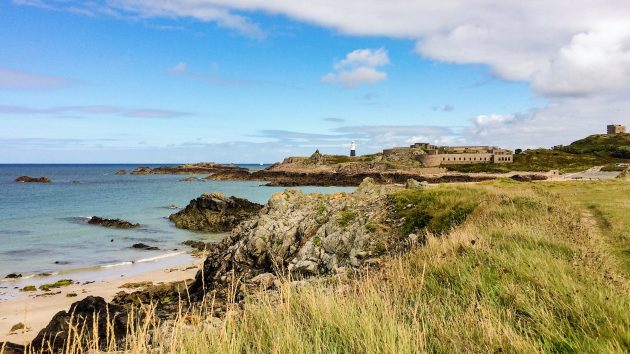Octogenarian adventurer Peter Baylis scares himself in the Channel Islands as he sails to Alderney via the Swinge
Bragging about my bullshit doesn’t come naturally, but I want to share this one because it might help other readers avoid a similar nasty and potentially disastrous situation, writes Peter Baylis.
It was serious and I feel bad about it, so maybe a confession will be cathartic for me too.
I’m an old man in my early 80’s – maybe not as agile as I used to be, but physically and mentally fit.
I’ve played in boats for most of my adult life and have been a serious sailor for over 30 years.
Peter’s Hallberg-Rassy Sable is his favorite boat to date. Credit: Peter Baylis
I hold an RYA Yachtmaster Offshore qualification and have owned and sailed Sablemy Hallberg-Rassy 36 for 16 years.
I am a cautious sailor who is becoming more and more risk averse with each passing year.
Prior to my retirement, I was heavily involved in aircraft safety, which included investigating accidents to determine their cause and implementing actions to prevent their recurrence.
Without a doubt, part of this culture of safety has carried over to my sailing world.
Leaving Guernsey
I recently returned from a trip to the Channel Islands with a friend who is a very experienced and capable sailor.
We spent a few pleasant days in Guernsey and Sark and decided to spend our last night in Alderney.
This is the 20 mile trip from Guernsey to Alderney I want to talk about.
We set out from St Peter Port at high tide minus three hours to take advantage of the northeast current – a good tide to Braye d’Aurigny harbour.

Credit: Maxine Heath
There was only light wind in the Little Russel between Herm and Guernsey, and it was from the northeast, dead on the nose and definitely car work.
SableThe engine is a powerful Volvo Penta D2 55 and it was typically quiet and smooth as it pushed us between 6 and 7 knots.
The sun was out, and while we were spinning and eating pork pies, we had no worries in the world.
We were heading into one of the UK’s most dangerous bodies of water, but why should we care? We’ve done this dozens of times before and never had a problem.

Peter has been lulled into a false sense of security after safely navigating Alderney’s notorious waters many times before. Credit: Peter Baylis
‘The swing ? – that’s a piece of cake, mate! We were trust personified!
We headed north towards the famous rock of Pierre au Vraic which is uncovered at low tide, leaving it well to starboard.
About a mile north of Pierre au Vraic, we began our starboard turn and into the Swinge.
Everything was where it should be, with Alderney’s north-west coast about a mile to starboard and the rocky island of Burhou, with its summit hut, half a mile to port.
In the Swing
Soon we were in the weirs with the fair tide washing us over the ground at 10 knots.
It was very exciting – the falls are spectacular, but the boat remained stable and under control.
It was then that we realized that by heading northeast towards Braye Harbor at 10 knots, which was fine, the tide was also taking us north towards the rocky coast of Burhou, which was less good.

Relieved to be back in safer conditions after their near miss in the Swinge. Credit: Peter Baylis
We assessed the situation for about a minute before I started frantically clicking plus 10s on the autopilot to get away from Burhou and its rocky south coast.
It didn’t seem to be working – the rocks were closing in quickly.
I rushed below to check the chartplotter and to my horror we were now above a green chunk on the map.
At this point my mate shouted that the depth had dropped to 7m and he simultaneously initiated a 90° turn to starboard, pushing the throttle forward for a full talk.
Continued below…

Crashing waves and hidden rocks have earned some British tidal races a fearsome reputation. Dag Pike explains how to navigate…

We all have life jackets on board, but do you know how to use yours? We test 10…

After surviving a storm in the harbor while docked in Sicily, Trevor McIlwaine wonders – do I really like…

Bruce Goodwin’s ocean crossing with friends was nearing its end when they encountered a storm; the life raft was lost, the…
The horror ended as quickly as it began.
Within seconds, those 55 horsepower Swedish diesels had slowly but surely got us out of danger and into deep water.
The next 15 minutes or so to the port of Braye was uneventful and with little conversation between us. I guess we were both thinking about the nearness of disaster.
How close were we to disaster?

Peter Baylis is a retired engineer who has spent his entire working life in the aerospace industry. Having caught the sailing bug with a Mirror dinghy, which he even took with him on his honeymoon, Peter has owned many boats. However, his all-time favorite is his current Hallberg-Rassy 36 Mk2, Sable. It sails the south coast of England from its base in Dartmouth and makes trips to the Channel Islands. Credit: Peter Baylis
Well, in my opinion, we were seconds away from hitting rocks and, traveling at 10 knots in overflows, it wouldn’t have ended well.
The Hallberg Rassy is a sturdy and well found boat, but at this speed I suspect it may have left its keel behind leaving the boat a total loss.
And us, who knows?
Launched into falls with a strong tide and without a life jacket, at 80 years old, I estimated my chances of survival at almost zero.
The real lesson in all of this was the most obvious: things happen awfully fast when you’re traveling at 10 knots above the ground.
Lessons learned
If I ever sail the Swinge again – and at the moment I’m not enthusiastic – these are the changes I would make to my approach. You can probably
think about more.
- Wear a life jacket: It’s too late to put one on when problems suddenly arise. If you can’t wear one all the time, at least do so when sailing into any kind of danger, in rough seas or at night.
- Don’t rely on autopilot in a tidal race: I love my Autohelm, but when you need precise and immediate course correction, turn it off and keep your hands on the wheel.
- Don’t rely solely on eyeball navigation: Plot waypoints on your plotter before setting out and continue to monitor progress to ensure you stay on track.
- Leave Pierre au Vraic to port: On this journey from Guernsey to Alderney via the Swinge, leave the rocky obstacle Pierre au Vraic to port. Leaving it to starboard as we did took us a few unnecessary miles west of Alderney and gave us a greater opportunity to be swept north. I think it’s best to stay closer to Alderney and the south side of the Swinge where it seems to be quieter, but be aware of the outlying rocks.
Did you enjoy reading “We were seconds away from hitting rocks in the Swinge”?
A subscription to Yachting Monthly magazine costs about 40% less than the cover price.
Print and digital editions are available through Magazines Direct – where you can also find the latest offers.
YM is packed with information to help you get the most out of your time on the water.
-
-
- Take your seamanship to the next level with tips, advice and skills from our experts
- Unbiased in-depth reviews of the latest yachts and equipment
- Cruising guides to help you reach those dream destinations
-
follow us on Facebook, Twitter and Instagram.

